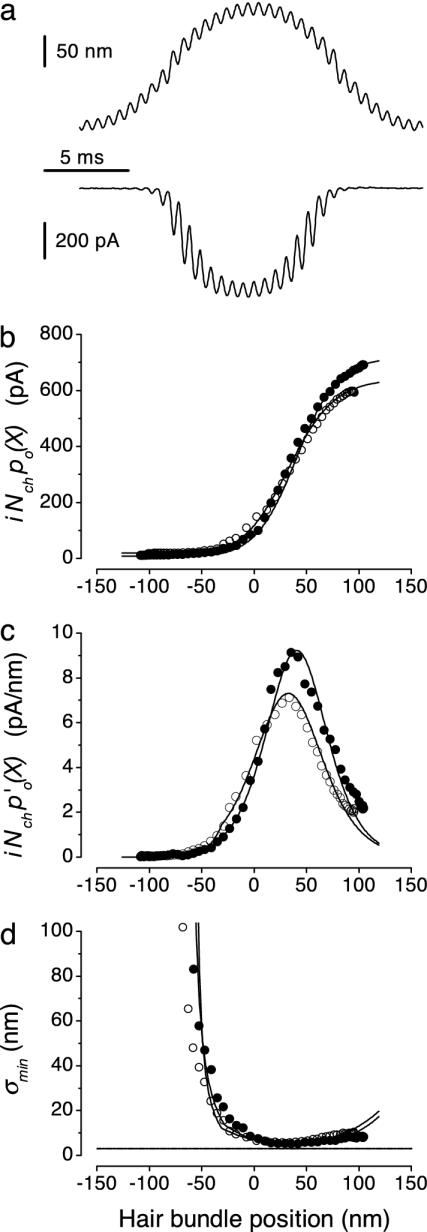Fig. 2.
Determination of hair-cell accuracy, σmin(X). (a) Measured hair-bundle displacement (upper trace) and evoked transducer current (lower trace) versus time in response to the double-sine protocol consisting of a large-amplitude, low-frequency component (49 Hz) and a small-amplitude, high-frequency component (1,563 Hz). Traces shown represent averages of 18 responses (bundle height, 3.5 μm). (b) Transducer current as a function of (quasi-static) hair-bundle position, X, in two cells obtained from responses as in a (open symbols represent the same cell as in a). (c) Changes of transducer currents in response to small changes in hair-bundle position normalized to 1 nm as a function of (quasi-static) hair-bundle position obtained from the same cells as shown in b. (d) Cramér–Rao lower bound on accuracy of hair-bundle position, σmin(X), determined from the data shown in b and c by using Eqs. 1 and 2. Solid lines in b–d give results of fits of the two-state gating-spring model. Parameters (filled and open symbols, respectively): Ks, 6.2 and 7.2 μN/m; D, 34 and 26 nm; Nch, 74 and 66; σmin(X0), 4.5 and 5.4 nm; X0, 41 and 33 nm. The horizontal line shows the almost identical (3.0 and 2.9 nm) Brownian gating-spring noise levels, σB, of the two cells.

